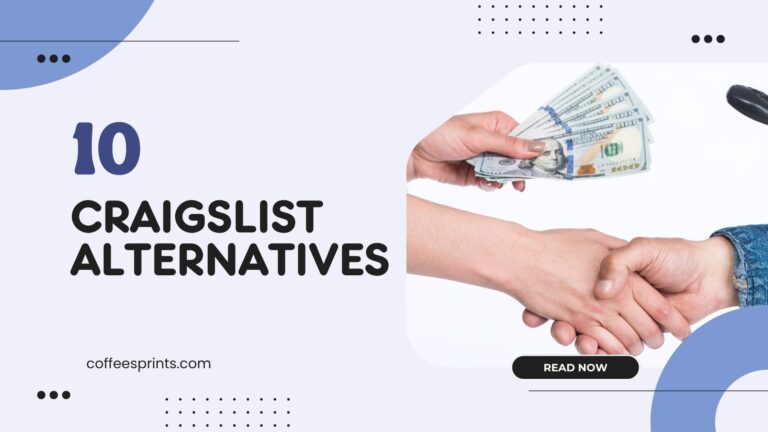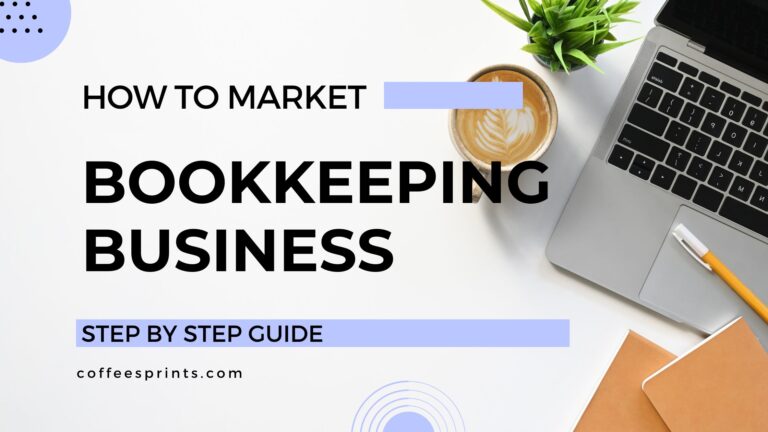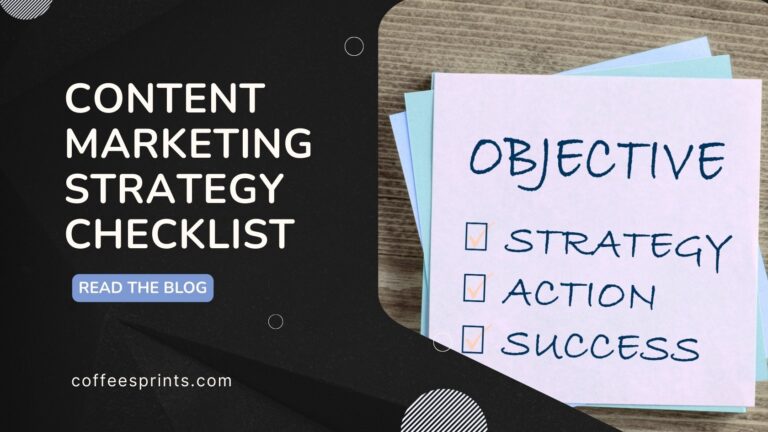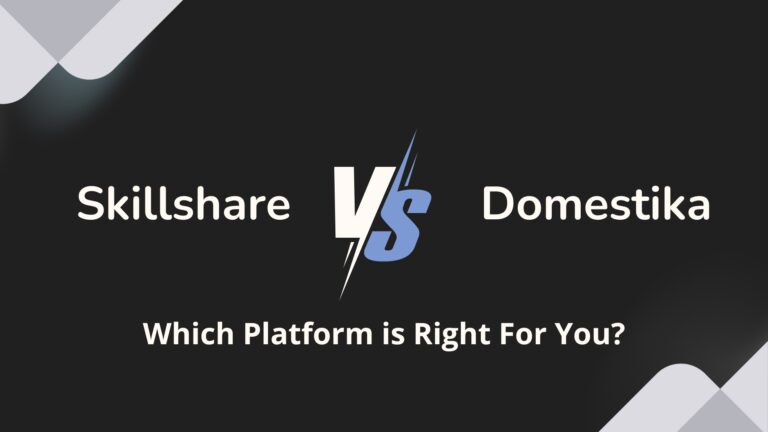How to Start a Podcast for Your Business Without Breaking the Bank
Planning to build a personal brand or take your business to the next level?
A podcast is the viable option!
People love listening to podcasts for different reasons. They want to be entertained or learn new things while getting things done.
If you’re a beginner, starting a podcast seems too complicated or costly, but it is not. It’s actually easier and cheaper than you think.
Many businesses have built a loyal following with just a laptop and a mic. In this article, let’s break down the intricacies of starting a podcast without spending a lot of money.
Podcast Statistics Updated
Before starting a podcast, looking at current data and trends is good practice to ensure your execution is on track.
- Approximately 60% of U.S. consumers listen to podcasts.WSJ
- 30% of these listeners tune in weekly, with the percentage rising to nearly 55% among millennials.WSJ
- As of 2023, there are over 500 million podcast listeners worldwide, projected to surpass 650 million by 2027. Statista
- In 2024, 34% of Americans reported listening to a podcast weekly, up from 26% in 2022. Quill Podcasts
- 59% of individuals aged 12-34 listen monthly.Buzzsprout
- 55% of those aged 35-54 listen monthly.Statista
- 27% of those aged 55+ listen monthly. Edison Research
- Female listenership reached an all-time high in 2021, with 45% of U.S. women listening monthly. Buzzsprout
- Over 66% of U.S. podcast listeners have a bachelor’s degree or higher, and the average annual household income is $75,000 or more. Buzzsprout
- 75% of listeners trust the hosts they listen to, viewing them as influential figures.
- More than half of listeners feel a sense of community with other podcast listeners, increasing to over 60% among those aged 14 to 40. WSJ
- Nearly 40% of listeners are more influenced by podcast ads than those encountered elsewhere; this rises to about 50% for Gen Z and millennials.
- Podcast advertising delivers a ROAS of 4.9, outperforming traditional media channels. Vox
- As of October 2024, 40% of U.S. weekly podcast listeners prefer watching a podcast, up from 28% in October 2022. Backlinko
- About one-third of listeners tune in to follow a host they like.WSJ
- 75% of listeners trust the hosts they listen to, likening them to influencers.WSJ
- Over 50% of respondents feel a sense of community with other podcast listeners.
- This sentiment increases to over 60% among listeners aged 14 to 40.WSJ
- Nearly 40% of listeners are more influenced by podcast advertisements than those encountered elsewhere.WSJ This figure rises to about 50% for Gen Z and millennial listeners
Why Podcasting, You Ask?
Let’s completely understand why running a podcast is important in today’s world.
Today, it’s really hard to get customers’ attention. A podcast is not just about the audio; it’s a way to foster strong customer relationships and loyalty as they can help you build a sense of community among your target audience.
Again, I can’t specify enough the power of a community for your business today.
In addition to that:
You can:
- Establish authority in your niche by talking about different thought-leadership topics
- Build trust among your audience because you present yourself as a trusted source with each episode.
- Repurpose parts of the podcast as blog posts, LinkedIn posts, or emails.
- Indeed, monetize the traffic.
Steps to Plan Your Podcast Content – In-depth Guide
Planning your podcast ahead is key to making it happen. Start by focusing on a specific area to stand out. These steps make planning easier without costing more time.
Your Podcast’s Niche and Target Audience
Find out who your audience is by using tools like Google Trends or social media polls. Ask yourself, “What questions do my customers have?”
- Tools like SurveyMonkey can help find out what they like.
- Alternatively, you can use Google Keyword Planner or AnswerThePublic to learn more about your audience’s interests.
- If you’re an avid ChatGPT or Gemini user, you can just give a prompt like this:
“Act as a content marketing expert and tell me 10 frustrations, 10 challenges, 10 needs, and 10 fears people experience who want to [target audience + what you want to solve].”
For instance, a clear niche, like “social media marketing for authors,” attracts the right listeners.
Adding a Personal Touch With Your Voice: Podcast Engagement
The versatility of podcasts is impeccable. In addition to different formats, you could also add a personal touch that makes listeners feel part of a community. You can make it relatable to your audience, which is a crucial step to engage with them. Unlike videos, podcasts are easy to listen to during commutes or workouts, keeping your brand on their minds all day. This constant connection builds loyalty, turning listeners into repeat customers.
Check out this article if you want to learn tips to train your voice for podcast.
Creating a Content Calendar for Consistency
Plan your topics using free tools like Trello or Google Sheets. While planning, keep your productivity and working style in mind. Some people like working some part every day, while others like me prefer batch working in 1-2 days.
Research your topics and record episodes in batches to save time. Maybe you can plan three shows at once in one session. This helps you stay consistent, which builds trust among your audience.
If you’re hosting an interview on your podcast, ensure you share deadlines and required details with guests way ahead of time. I’d suggest keeping a planner, automatic alerts, or an Excel sheet to stay on track with your schedule.
Equipment and Software for Budget-Friendly Podcasting
Starting a podcast doesn’t need a fancy studio or pricey podcast equipment. Focus on the basics that sound great without costing too much. Here are some tips to achieve a professional sound on any budget.
Choosing the Right Microphone on a Budget
Start with a microphone that’s affordable yet clear. If you already have an iPhone or laptop, you can use them with a pop filter and external mic. Choose a USB microphone for its ease of use and compatibility.
Here are some picks for you:
Budget Pick: Samson Q2U – USB/XLR mic with solid sound quality.
Best Overall: Shure MV7 – USB and XLR, great sound, perfect for solo or interview podcasts.
Pro-Level: Shure SM7B – Studio-quality mic used by top podcasters (XLR only).
Affordable Editing Software Options
Use free and low-cost tools to edit like a pro. Audacity (free) and GarageBand (for Mac users) are great for basic edits and noise reduction. For more features, Hindenburg Journalist (starting at $49/year) makes multi-track editing easy. These programs are perfect for podcasting for beginners with their user-friendly interfaces.
Achieve Better Audio Quality on Budget
Turn your home into a studio with everyday items. Keep your microphone 6–12 inches from your mouth. Use blankets to cover surfaces and reduce echoes, or try DIY sound panels. Record during quiet times, like early mornings or late nights, to avoid background noise.
Any space can sound like a professional studio if you use some minor tweaks. Spend your money wisely, focusing on the essentials first.
Different Podcast Formats to Consider
Your podcast format helps set listener expectations and makes planning your episodes much easier. Besides, here are some common podcast structures to consider:
1. Solo (Monologue) Podcast
You’re the only voice. Perfect for sharing personal stories, expert insights, or niche knowledge. It’s simple to produce but requires strong storytelling or teaching skills to keep listeners engaged.
2. Interview-Based
A host invites guests—experts, creators, or influencers—for conversations. It brings fresh perspectives and can help grow your audience through your guests’ networks. Tip: Good preparation and active listening are essential here.
3. Co-Hosted Podcast
Two or more hosts discuss topics together. The dynamic can be casual, funny, or educational. Chemistry between hosts is crucial, and this format tends to feel like a natural conversation.
4. Panel or Roundtable
Features multiple guests or hosts in a discussion. Great for debates or tackling complex topics from various angles. Just be sure to moderate well to avoid chaos.
5. Narrative or Storytelling
Often scripted and highly produced, this format works well for true crime, history, or fictional stories. It’s immersive and impactful but requires more planning, editing, and sound design.
6. Hybrid
Mixes different formats—for example, a host-led intro, followed by an interview, and ending with a solo summary. This gives flexibility but can be harder to produce consistently.
✅ Pro Tip: Pick a format that suits your content style, production skills, and how frequently you plan to release episodes. You can always evolve it over time as you get more comfortable and learn what your audience loves.
Besides, have a great intro and outro to keep listeners interested. Use tools like Otter.ai to script smooth transitions. More about it in the next section.
Tips for Crafting Compelling Podcast Scripts
Great podcasting scripts can make even simple setups a hit. Start by mastering techniques that keep listeners hooked from the start. Whether scripting every word or improvising, these strategies make your message shine.
Writing Engaging Intros and Outros
Your opening seconds are key. Use intros to introduce your topic and show your expertise. For example:
- Start with a friendly greeting and a quick topic summary
- Preview key points to build curiosity
- End episodes with clear calls to action, like subscribing or visiting your website
Here are some interesting podcasts to learn from their styles, intros, and affiliate products for your clarity.
Podcasts for Entrepreneurs and Hustlers
Podcasts for Women Entrepreneurs
Balancing Preparation and Authenticity
Script frameworks save time without sounding stiff. Try these steps:
- Outline main points but leave room for natural conversation
- Use bullet points to guide discussions instead of full scripts
- Practice vocal pacing to keep energy high during recorded takes
Remember, authenticity matters most. Let your personality shine while sticking to your content roadmap. These techniques ensure your episodes feel polished yet genuine.
Branding Your Podcast – What You Should Know
Creating a strong brand for your podcast helps listeners remember you. Even with a small budget, smart choices can make a big difference. Here’s how to build a brand that speaks to your audience.
Impactful Cover
Your podcast cover is your first impression in apps like Apple Podcasts or Spotify. Use Canva or Figma to create visuals that match your niche. Choose bold colors for energy or minimalist designs for a professional look. Make sure your art looks good even at small sizes.
The Name Matters!
Choose a name that’s catchy and tells what your podcast is about. Mix keywords with unique twists. For example, “Tech Talk Today” is clear and inviting. Avoid names that are hard to spell or search for.
A Strong Tagline
A tagline like “Solving Everyday Tech Problems” (from *Tech Talk Today*) quickly tells what your podcast is about. Keep it short, under 10 words. Use tools like Namecheap’s domain search to check if your tagline is already taken.
Audio branding is important, too! Use royalty-free music from Epidemic Sound or Free Music Archive for your intro and outro. Consistent music or voice tones help listeners recognize your show. Aim for a polished yet authentic feel without spending a lot on designers.
Marketing and Promoting Your Podcast
In this section, let’s skim over the key practices to market your podcast. But do explore more options as you grow.
Also, marketing is all about consistency. Pick a platform or two where your audience is active and stay consistent to grow your audience.
- For instance, you can start by sharing short clips on social media.
- Post 30-second teasers on Instagram Stories or Twitter to catch people’s eyes.
- Use Spotify and Apple Podcasts to showcase your best episodes.
- Turn episodes into short YouTube clips or LinkedIn articles.
This way, you can reach more people in different places.
Some marketing strategies that usually work for podcasts are:
- Sharing quotes from guests as Instagram carousels
- Posting episode release dates on Facebook events
- Running Twitter polls based on episode topics
- Cross-promote on your guests’ shows or their active social media platforms.
- Work with businesses that match your audience.
- Guest hosts on their shows invite their followers to yours.
- Affiliate partnerships let you earn from your podcast. Promote products and include affiliate links in episode descriptions.
- Keep a mailing list. Send your email list episode summaries and direct links. Add a “Subscribe Now” button in newsletters.
Along with these, you could run ad campaigns if you deem it helpful.
Hosting Options For Your Podcast
A good podcast hosting service helps you lay a strong foundation when starting a podcast. Unlike Apple Podcasts or Spotify, hosting services store your files and manage distribution. Let’s find the best options tailored to your goals.
Free vs. Paid Podcast Hosting Services
Free hosting platforms like Anchor or Spreaker offer easy setup and publishing. But they often have storage limits, add ads, or lack analytics.
On the other hand, paid podcast hosting services like Libsyn or Podbean cost $10–$30 monthly and offer advanced tools.
Paid plans let you control your RSS feed, track listener stats, and monetize with sponsorships. Free tiers are suitable for beginners, but growing shows need paid features to succeed.
What to Look for in a Podcast Hosting Platform
Before you choose a podcast hosting platform, keep these things in mind:
Storage and bandwidth: Check limits based on episode size and listener numbers.
Analytics: Track downloads, listener locations, and episode performance.
Monetization: Look for sponsor ad management and episode sponsor slots.
RSS feed control: Ensure you can edit show notes and episode details easily.
Scalability: Pick a plan that grows with your audience to avoid upgrades mid-launch.
How Hosting Can Affect Your Podcast’s Reach
Paid hosting platforms connect with major directories automatically, while free services might need manual submissions. Top hosts like Blubrry include SEO-optimized show pages, boosting discoverability. Reliable uptime and fast server speeds also matter—downtimes frustrate listeners.
Compare plans from other providers like Podbean or Podcorn Studio to match your budget and growth plans.
Analyzing Your Podcast’s Success and Growth
When you complete a task, it’s important to measure it. Similarly, analyze your podcast performance to make it succeed. Use this data to improve your strategy, monetize your podcast, and boost engagement. Let’s look at how to track important metrics and adapt as you grow.
Key Metrics and Analytics
Start by watching your downloads, listen time, and subscription rates. Use free tools like Anchor or Buzzsprout to see where listeners stop. If they drop off early, maybe your intro needs a better hook.
Tracking these metrics helps keep your content in line with what your audience likes.
Listen to Your Listeners
Don’t just look at numbers—ask for feedback. Send quick surveys via email or social media to see what they like. For example, a Google Form asking, “What topic should we cover next?” gets listeners involved.
Their answers help you refine your podcasting techniques, making sure every episode is relevant and valuable.
Summing it Up!
Podcasting is a journey of small wins. You’ve built a plan with minimal costs, from choosing equipment to writing scripts. Now, use data and listener feedback to fine-tune your approach.
Success comes from being consistent, not perfect. Start recording, track what works, and let feedback guide your next steps. Your audience is waiting—what will you create next?






